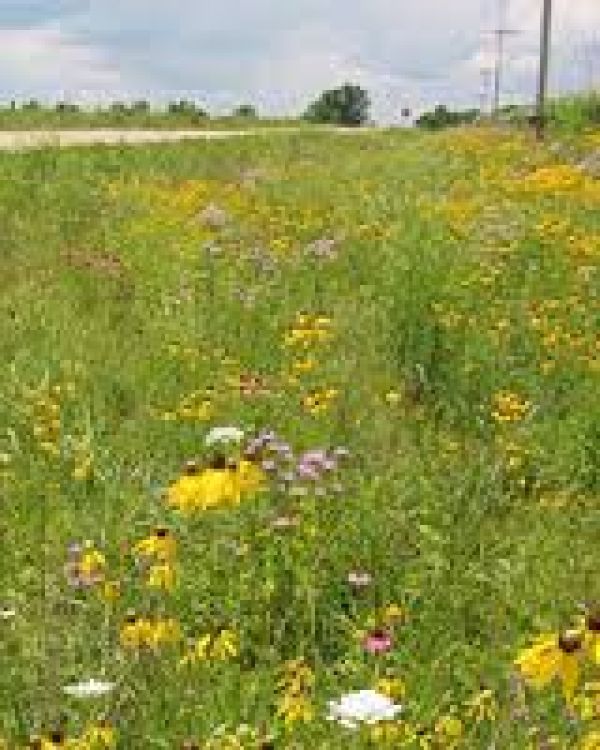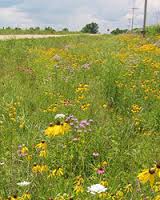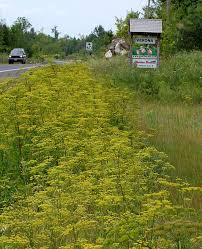
Why not roadside prairie in McHenry County?
 Have you driven through Iowa? The roadsides are beautiful. Native wildflowers and grasses line the roads throughout much of the state, offering habitat for wildlife, especially birds and insects. (Iowa roadside in photo on left)
Have you driven through Iowa? The roadsides are beautiful. Native wildflowers and grasses line the roads throughout much of the state, offering habitat for wildlife, especially birds and insects. (Iowa roadside in photo on left)
Further, Iowa state law prohibits the mowing of roadside meadows until after July 15 except under very specific circumstances. The delay in mowing allows for birds that nest in the grasses to finish raising their chicks before the mowers destroy the nests.
The highway prairie program applies to all public roads in the state, and approximately 50,000 acres of roadsides have been planted with native grasses and wildflowers. Not only does wildlife benefit, but so do the tax payers as fewer resources are spent mowing roadsides.
The Iowa Department of Transportation website includes a long list of benefits from establishing native prairies on road right-of-ways, including low-maintenance weed and erosion control, reduced surface water runoff, reduced snow drifts, enhanced wildlife habitat and species diversity, natural beauty and filtration of stormwater.
Quite a difference from roadside maintenance in much of McHenry County.
There are two main issues related to roadside maintenance that I’ve observed locally: too much mowing and poorly-timed mowing.
There are certainly hundreds of miles of roadsides in the county that could be mowed less. I understand that there are safety considerations in some locations – near intersections, culverts and driveways. But I’ve seen beautiful stands of milkweed mowed to the ground – along with any monarch caterpillars that might have been feeding on the plants – even when the plants are 10 feet back from the pavement.
Can’t we strike a balance between the neatly trimmed roadside and nature? What if road crews only made one pass with the mower to keep vegetation short nearest to the pavement? And what if people planted milkweed and other native plants in the rights-of-way in front of their properties? In just a couple of years, there could be hundreds of acres of habitat for birds and butterflies winding throughout the county.
The problem of poorly-timed mowing is more challenging. This time of year, we all drive past roadsides filled with non-native, invasive and even noxious plants. Chief among these this time of year are wild parsnip, teasel and various types of thistle. (roadside parsnip shown in photo at right)
 Using US Route 14 as an example, I have seen the numbers of parsnip and teasel plants increase dramatically over the last decade. This is caused by mowing after the plants have bloomed and set seed, thus spreading the seed up and down the roadside. The most effective way to eliminate these plants is to mow them while they are still flowering. Some will flower again, but the plants will be much smaller and the seed production much lower.
Using US Route 14 as an example, I have seen the numbers of parsnip and teasel plants increase dramatically over the last decade. This is caused by mowing after the plants have bloomed and set seed, thus spreading the seed up and down the roadside. The most effective way to eliminate these plants is to mow them while they are still flowering. Some will flower again, but the plants will be much smaller and the seed production much lower.
The teasel and parsnip are both biennials, meaning that the plants die after they produce seed. By continuing to time the mowing to keep the plants from setting seed, these plants can be eliminated. And adding native plants to compete will help keep the invasives from coming back.
There are approximately 2,500 miles of roads in McHenry County. The total includes Interstates, State Routes like Illinois Route 176, County highways, Township road and those roads located in cities and villages.
Just imagine if even 10% of those roadsides were planted with and managed for native grasses and wildflowers?